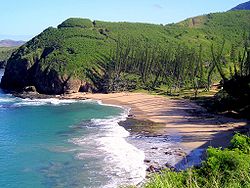
New Caledonia was "largely indifferent to tourists ... as long as nickel mining remained economically dominant". [1] After the Korean War and Vietnam War, world prices for nickel collapsed (1970s) and aggressive marketing campaigns were initiated for the territory. [2]
